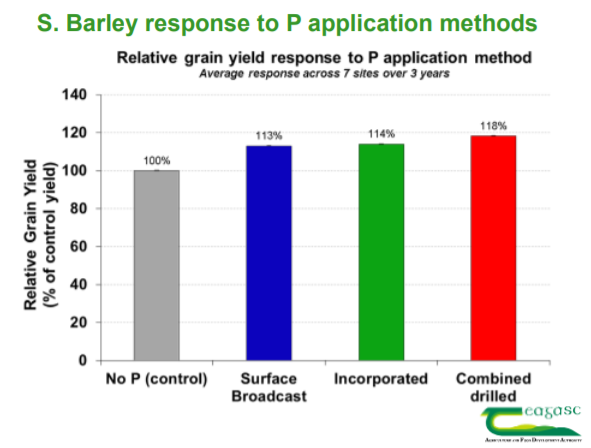For decades, the debate on whether to incorporate or spread phosphorus (P) has been talked about at tillage conferences and seminars across the country.
The debate continued at this week’s National Tillage Conference, where David Wall presented findings from Teagasc trials over the past number of years.
Phosphorus is a very important element for root development of a plant and also in promoting tillering, as is evident in the picture below.
Wall stated that 60% of our tillage soils are in the low index P categories and, while yield response to P was most common on low index sites, a response was also seen on index four sites. This result was generated in a trial that examined 11 sites across four years.
“There was a higher grain yield response at low index P levels. However, site and climate influenced P responses.
“Index four soils should have enough reserves to grow a crop, but we have seen a massive response on some of these sites.
“2013 was a very cold spring right up to the middle of April. We had temperatures below 6°.
We had [spring barley] crops sown late into those conditions. It had to grow very fast and additional P in the system helped in that process; we saw a massive response. Weather has a big impact.
Importance of P where seeding rate is reduced
The graph below shows the importance of P in achieving yield. Where seed rate increased from 200 seeds/m² to 500 seeds/m² and 20kg of P was applied; seed rate had very little impact on yield compared to where no P was applied.
How to apply P
Index one P sites were used in a trial to examine the effect of broadcasting P, incorporating P into the soil and combined drilling of P with the seed.
“If you deliver P close to the seed, you’re minimising the soil exposure to that P. In spring barley, it’s a bit of a race between the soil and the plant.
If you deliver the fertiliser where the seedling can exploit the P, it’s a better mechanism overall.
Results of trials carried out on spring barley crops – across seven sites and over three growing seasons – showed that incorporating and combined drilling resulted in higher yields; but by less than 5%.
While this looks relatively small overall, it is important to state that this is an average over a range of soil indices. In addition, Wall did state that combined drilling can have a significant impact on yield on low index P sites.



